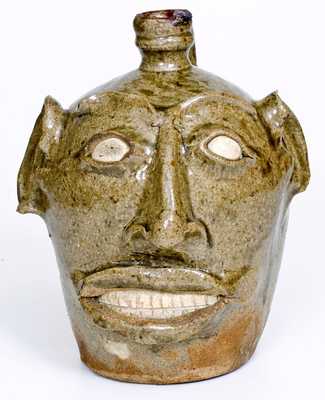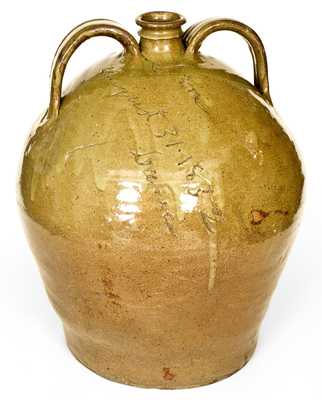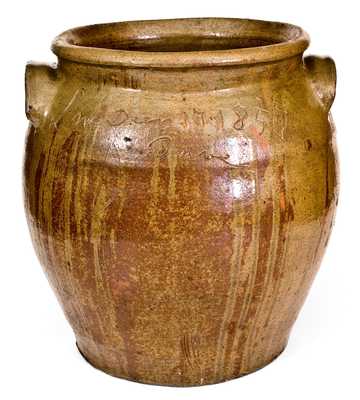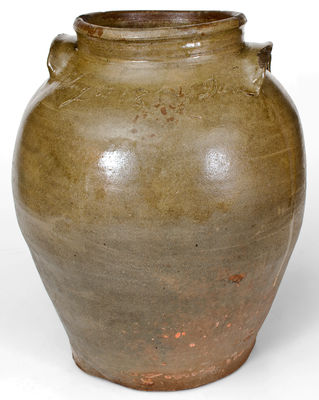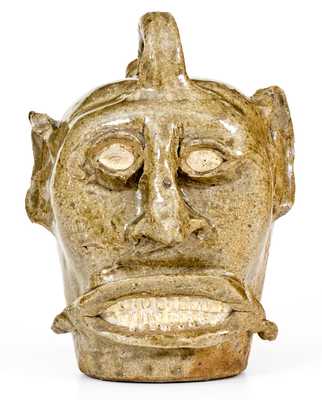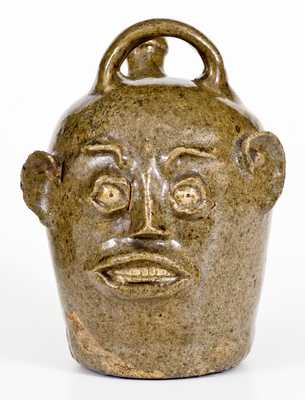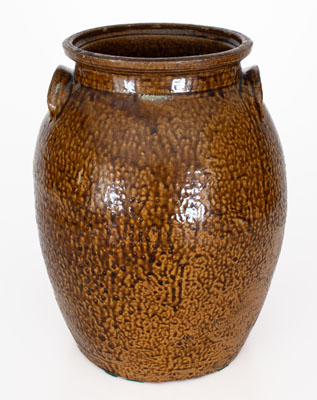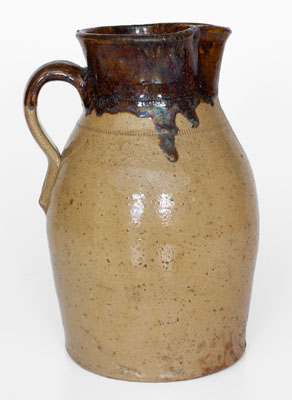Rare and Important Alkaline-Glazed Stoneware Jug, Stamped "DANL, CRIB S / TUSCALOOSA," Daniel Cribbs Pottery, Tuscaloosa, AL origin, circa 1830, highly-ovoid jug with ribbed handle and tooling to shoulder and spout, the surface covered in a glossy, light-green alkaline glaze. Impressed at shoulder with arched Daniel Cribbs maker's mark. According to Brackner's Alabama Folk Pottery, Daniel Cribbs (1800-1891) moved from Ohio to Erie, Greene County, Alabama around 1823 with at least two of his brothers. By 1827, the brothers had gone their separate ways and Daniel, a wealthy businessman, had established a pottery in Tuscaloosa along what became known as Cribbs Creek. Brackner states that Cribbs's life was a "microcosm of the American frontier experience." At 13, he was a courier in Ohio during the War of 1812. He was the sheriff of Tuscaloosa County from 1842-1845, running unsuccessfully for the state House of Representatives. He also owned a steamboat, The Tuscaloosa, that carried goods including his pottery down the Black Warrior River from Tuscaloosa to the port of Mobile. In 1845, the Tuscaloosa blew up, nearly ruining Cribbs financially, and he would leave Alabama for a short period in 1850 to be a forty-niner in California's gold mines. His pottery would remain active for over fifty years. This jug follows a form typical of pieces from Cribbs's home state of Ohio. It was possibly made by an enslaved potter; Brackner notes that according to the 1860 slave schedules, Cribbs owned six slaves, his son Harvey owned three, and his mother-in-law Lucy Lavergy, owned seven. Two of Lavergy's slaves, Harrison and Shepherd, are listed in an 1851 loan document as "Mechanicks by trade potters" and undoubtedly worked for Cribbs (Brackner, p. 149-150). An intriguing aspect of this jug is its alkaline-glazed surface. Brackner states that Cribbs's products were salt-glazed, making this example exceptionally rare or possibly unique. While the form of the jug relates to Ohio stoneware, its glaze treatment clearly speaks to the influence of the Edgefield, South Carolina potting tradition as potters made their way west. An exceptionally early example of Alabama stoneware, made at the shop of one of the leading figures in the state's pottery industry and the first example bearing this stamp that we have offered. Literature: A four-gallon salt-glazed stoneware jar bearing Cribbs's mark, in the collection of the Birmingham Museum of Art, is illustrated in the color plate section of Brackner's Alabama Folk Pottery. Excellent condition with a few minor base chips, a tiny nick to handle, and some minor in-the-firing flaws to surface. H 10 1/2".









